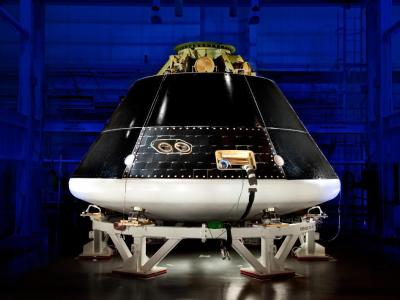NASA After Atlantis: Mars, James Webb Space Telescope
NASA's launch of the Atlantis at Kennedy Space Center on Friday marked the beginning of the end to NASA's space shuttle program.
When the Atlantis safely returns back home on July 20, after 12 days docked to the International Space station, it will be the first time in decades that the U.S. will have no space craft to carry personnel to space.
According to AL.com, NASA will have to depend on Russia only to transport crew members and cargo into space.

NASA's various projects and programs have recently suffered blows due to the U.S. government's fiscal woes and the nation's waning interest in space.
Take for example the James Webb telescope, also known as the telescope built to replace the now old Hubble Space Telescope and allow unprecedented research to NASA for the next two decades.
NASA is fighting politicians who want to end this project due to its burdening budget costs. Estimates for the cost of this project have almost quadrupled since its inception and now the U.S. House of Representatives wants to put an end to this colossal project even though billions of dollars have already been invested.
The appropriate House of Representatives committee last week decided to cut down NASA's budget by $1.9 billion and has apparently put the agency in disarray.
With all this in perspective, what will NASA do next?
NASA has boldly announced that the end of the shuttle program does not mean the end of NASA or better yet the end of NASA-manned missions to space.
The space agency communicated its high ambitions for space explorations, saying it will be "designing and building the capabilities to send humans to explore the solar system, working toward a goal of landing humans on Mars," reads its website.
NASA landed a spacecraft named the Mars Pathfinder on Mars in 1997 carrying the Sojourner rover which analyzed Mars' atmosphere, climate and geology. But now, NASA is hoping to land man resembling robots it has developed and has been testing it in order to improve the testing limitations of machines such as rovers.
NASA, in cooperation with private companies, will also start building a new space vehicle called the Multi-Purpose Crew Vehicle designed for four astronauts in 21-day missions. NASA has reported that this space vehicle is just part of the next generation fleet it will start using for traveling beyond Low Earth Orbit (LEO).
The agency also plans to direction its research in order for it to immediately benefit society such as building greener, quieter and simply better aircrafts or helping create better systems for today's hectic traffic – a move to garner more national interest? Perhaps.
With these and other additional projects in development, NASA appears to be running under a full agenda and although it has suffered some setbacks such as the budget cut, it announced its commitment to stay in the lead for space exploration.





























